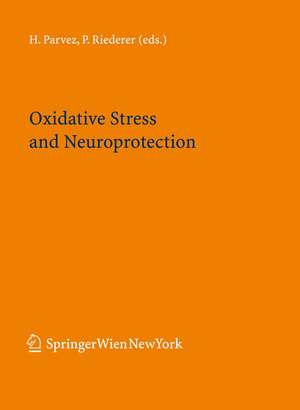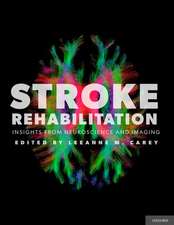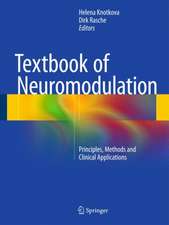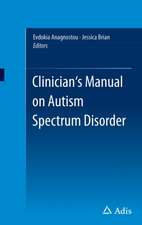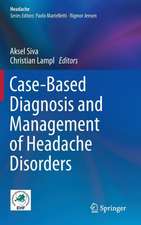Oxidative Stress and Neuroprotection: Journal of Neural Transmission. Supplementa, cartea 71
Editat de S. H. Parvez, Peter Riedereren Limba Engleză Hardback – 15 sep 2006
| Toate formatele și edițiile | Preț | Express |
|---|---|---|
| Paperback (1) | 1608.11 lei 6-8 săpt. | |
| SPRINGER VIENNA – 28 noi 2014 | 1608.11 lei 6-8 săpt. | |
| Hardback (1) | 1304.04 lei 38-44 zile | |
| SPRINGER VIENNA – 15 sep 2006 | 1304.04 lei 38-44 zile |
Din seria Journal of Neural Transmission. Supplementa
- 5%
 Preț: 1052.61 lei
Preț: 1052.61 lei - 5%
 Preț: 423.12 lei
Preț: 423.12 lei -
 Preț: 389.88 lei
Preț: 389.88 lei - 5%
 Preț: 360.86 lei
Preț: 360.86 lei - 5%
 Preț: 712.60 lei
Preț: 712.60 lei - 5%
 Preț: 365.61 lei
Preț: 365.61 lei -
 Preț: 379.68 lei
Preț: 379.68 lei - 5%
 Preț: 376.43 lei
Preț: 376.43 lei -
 Preț: 380.45 lei
Preț: 380.45 lei - 15%
 Preț: 665.73 lei
Preț: 665.73 lei - 5%
 Preț: 990.01 lei
Preț: 990.01 lei - 5%
 Preț: 368.73 lei
Preț: 368.73 lei - 5%
 Preț: 373.84 lei
Preț: 373.84 lei -
 Preț: 391.22 lei
Preț: 391.22 lei - 15%
 Preț: 643.34 lei
Preț: 643.34 lei -
 Preț: 381.59 lei
Preț: 381.59 lei - 5%
 Preț: 394.32 lei
Preț: 394.32 lei - 5%
 Preț: 374.78 lei
Preț: 374.78 lei -
 Preț: 397.97 lei
Preț: 397.97 lei - 5%
 Preț: 379.33 lei
Preț: 379.33 lei - 5%
 Preț: 364.33 lei
Preț: 364.33 lei - 5%
 Preț: 372.97 lei
Preț: 372.97 lei - 5%
 Preț: 372.19 lei
Preț: 372.19 lei - 5%
 Preț: 387.02 lei
Preț: 387.02 lei - 5%
 Preț: 1371.73 lei
Preț: 1371.73 lei - 5%
 Preț: 382.06 lei
Preț: 382.06 lei - 5%
 Preț: 367.47 lei
Preț: 367.47 lei - 5%
 Preț: 698.36 lei
Preț: 698.36 lei - 18%
 Preț: 1400.35 lei
Preț: 1400.35 lei - 5%
 Preț: 1314.97 lei
Preț: 1314.97 lei - 5%
 Preț: 1428.71 lei
Preț: 1428.71 lei - 5%
 Preț: 1095.73 lei
Preț: 1095.73 lei - 5%
 Preț: 714.46 lei
Preț: 714.46 lei - 5%
 Preț: 1113.11 lei
Preț: 1113.11 lei - 5%
 Preț: 1015.42 lei
Preț: 1015.42 lei - 5%
 Preț: 719.74 lei
Preț: 719.74 lei - 5%
 Preț: 1381.89 lei
Preț: 1381.89 lei - 5%
 Preț: 1980.17 lei
Preț: 1980.17 lei
Preț: 1304.04 lei
Preț vechi: 1372.68 lei
-5% Nou
Puncte Express: 1956
Preț estimativ în valută:
249.52€ • 260.52$ • 206.52£
249.52€ • 260.52$ • 206.52£
Carte tipărită la comandă
Livrare economică 01-07 aprilie
Preluare comenzi: 021 569.72.76
Specificații
ISBN-13: 9783211333273
ISBN-10: 3211333274
Pagini: 264
Ilustrații: XIV, 264 p.
Dimensiuni: 210 x 277 x 17 mm
Greutate: 0.98 kg
Ediția:2006
Editura: SPRINGER VIENNA
Colecția Springer
Seria Journal of Neural Transmission. Supplementa
Locul publicării:Vienna, Austria
ISBN-10: 3211333274
Pagini: 264
Ilustrații: XIV, 264 p.
Dimensiuni: 210 x 277 x 17 mm
Greutate: 0.98 kg
Ediția:2006
Editura: SPRINGER VIENNA
Colecția Springer
Seria Journal of Neural Transmission. Supplementa
Locul publicării:Vienna, Austria
Public țintă
ResearchCuprins
Levodopa in the treatment of Parkinson’s disease.- Changing dopamine agonist treatment in Parkinson’s disease: experiences with switching to pramipexole.- The DONPAD-study — Treatment of dementia in patients with Parkinson’s disease with donepezil.- PD-related psychosis: pathophysiology with therapeutical strategies.- Antioxidant capacity in postmortem brain tissues of Parkinson’s and Alzheimer’s diseases.- Apoptosis inhibition in T cells triggers the expression of proinflammatory cytokines — implications for the CNS.- Molecular mechanism of the relation of monoamine oxidase B and its inhibitors to Parkinson’s disease: possible implications of glial cells.- Involvement of type A monoamine oxidase in neurodegeneration: regulation of mitochondrial signaling leading to cell death or neuroprotection.- The relationship of early studies of monoamine oxidase to present concepts.- Isatin, an endogenous MAO inhibitor, and a rat model of Parkinson’s disease induced by the Japanese encephalitis virus.- Isatin interaction with glyceraldehyde-3-phosphate dehydrogenase, a putative target of neuroprotective drugs: partial agonism with deprenyl.- Inhibition of amine oxidases by the histamine-1 receptor antagonist hydroxyzine.- Neuroprotection for Parkinson’s disease.- Marker for a preclinical diagnosis of Parkinson’s disease as a basis for neuroprotection.- Assessing neuroprotection in Parkinson’s disease: from the animal models to molecular neuroimaging in vivo.- Deprenyl: from chemical synthesis to neuroprotection.- The use of rasagiline in Parkinson’s disease.- Novel neuroprotective neurotrophic NAP analogs targeting metal toxicity and oxidative stress: potential candidates for the control of neurodegenerative diseases.- Acute and chronic effects ofdevelopmental iron deficiency on mRNA expression patterns in the brain.- Long lasting effects of infancy iron deficiency — Preliminary results.- Altered regulation of iron transport and storage in Parkinson’s disease.- Iron dyshomeostasis in Parkinson’s disease.- Cerebral oligemia and iron influence in cerebral structures — element of Morbus Parkinson Models?.- Impact of selenium, iron, copper and zinc in on/off Parkinson’s patients on L-dopa therapy.- Metal specificity of an iron-responsive element in Alzheimer’s APP mRNA 5?untranslated region, tolerance of SH-SY5Y and H4 neural cells to desferrioxamine, clioquinol, VK-28, and a piperazine chelator.- Green tea catechins as brain-permeable, non toxic iron chelators to “iron out iron” from the brain.
